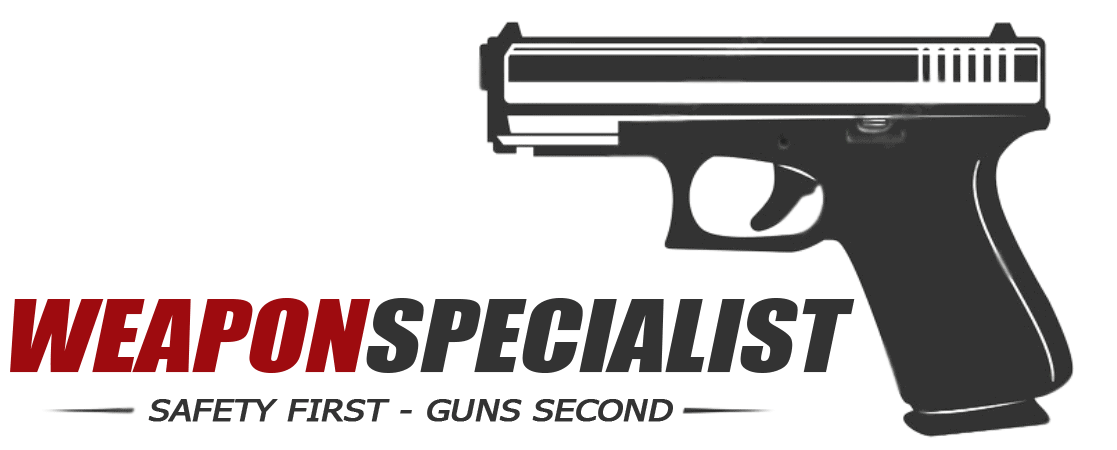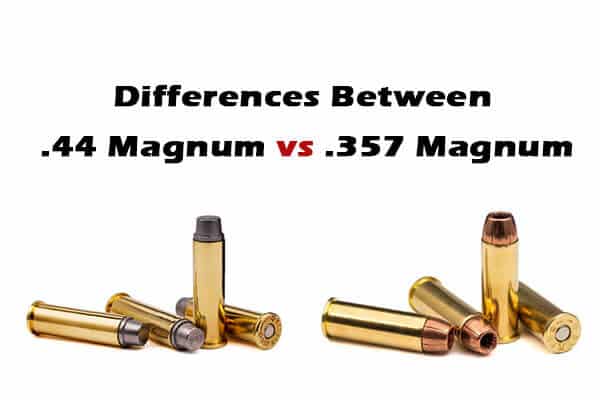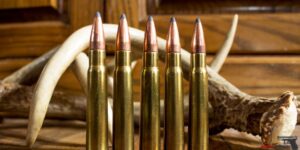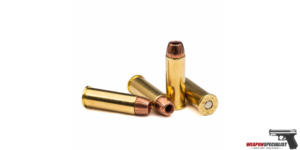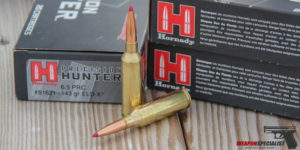When it comes to handgun cartridges, the .44 Magnum and .357 Magnum are two of the most iconic and widely recognized rounds in the world. These cartridges have earned their place in firearms history for their unique characteristics and applications.
In this blog post, I’ll take an in-depth look at the .44 Magnum and .357 Magnum, comparing various factors to help you make an informed choice for your shooting needs.
What is .44 Magnum?
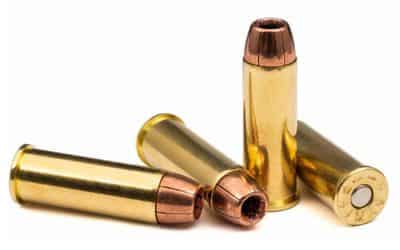
The .44 Magnum is a cartridge for revolvers and lever-action rifles. It was developed in the early 1950s by Elmer Keith, a renowned firearms writer and hunter, and Smith & Wesson.
The .44 Magnum was designed to be a more powerful cartridge than the .44 Special, which was the standard .44 caliber cartridge at the time.
The .44 Magnum is a powerful cartridge that is capable of taking down large game animals. It is also a popular choice for self-defense. The .44 Magnum has a reputation for being a “manstopper,” and it is often used by law enforcement officers and other professionals.
The .44 Magnum is a versatile cartridge that can be used for a variety of shooting applications. It is a popular choice for hunting, self-defense, and target shooting. The .44 Magnum is also a popular cartridge for reloading.
- Powerful cartridge that is capable of taking down large game animals
- Popular choice for self-defense
- Versatile cartridge that can be used for a variety of shooting applications
- Popular cartridge for reloading
- Powerful cartridge that can produce significant recoil
- More expensive to shoot than smaller caliber cartridges
- Not as widely available as some other calibers
What is .357 Magnum?
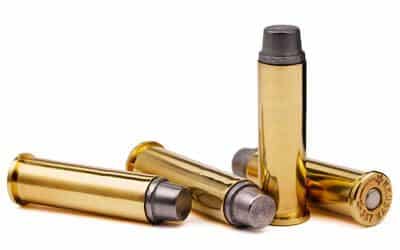
The .357 Magnum is a centerfire revolver cartridge that was introduced in 1935. It is based on the .38 Special cartridge, but with a longer case and more powerful powder load.
This gives the .357 Magnum a significantly higher muzzle velocity and muzzle energy than the .38 Special.
The .357 Magnum was originally developed for law enforcement use, and it quickly became popular among police officers and FBI agents. It was also a favorite of hunters and target shooters.
The .357 Magnum is a versatile cartridge that can be used for a variety of purposes. It is a powerful self-defense round, and it is also effective for hunting medium-sized game.
The .357 Magnum is also a popular choice for target shooting and competition shooting.
- High muzzle velocity and muzzle energy
- Versatility
- Wide availability of ammunition
- Relatively low recoil
- Higher cost than some other cartridges
- More pronounced recoil than some other cartridges
- Can be difficult to control for some shooters
The Differences Between .44 Magnum vs .357 Magnum Ammo
Specifications
| Feature | .44 Magnum | .357 Magnum |
|---|---|---|
| Bullet diameter | 0.429 inches (10.9 mm) | 0.357 inches (9.1 mm) |
| Case length | 1.285 inches (32.6 mm) | 1.290 inches (32.8 mm) |
| Overall length | 1.610 inches (40.9 mm) | 1.610 inches (40.9 mm) |
| Muzzle velocity (typical) | 1,400 feet per second (427 m/s) | 1,250 feet per second (381 m/s) |
| Muzzle energy (typical) | 1,000 foot-pounds (1,356 joules) | 550 foot-pounds (746 joules) |
| Recoil (typical) | 18.5 foot-pounds (25.1 joules) | 11.5 foot-pounds (15.7 joules) |
| Common bullet weights | 180-300 grains (12-20 g) | 110-180 grains (7-12 g) |
| Typical applications | Hunting, self-defense, target shooting | Hunting, self-defense, target shooting, law enforcement |
Recoil
The .44 Magnum has a significantly more pronounced and severe recoil than the .357 Magnum. This is because the .44 Magnum fires a heavier bullet at a higher velocity, resulting in more energy being transferred to the shooter.
- .44 Magnum: Recoil energy is typically measured in foot-pounds (ft-lbs). The .44 Magnum generates an average of 18.5 ft-lbs of recoil, while the .357 Magnum generates an average of 11.5 ft-lbs of recoil.
- .357 Magnum: The .357 Magnum is still a powerful cartridge with significant recoil, but it is generally considered to be more manageable than the .44 Magnum.
The .44 Magnum is not recommended for shooters who are new to handguns or who are not comfortable with heavy recoil. The .357 Magnum is a more versatile cartridge that can be used for a wider range of applications.
| Cartridge | Bullet weight (grains) | Muzzle velocity (fps) | Muzzle energy (ft-lbs) | Recoil energy (ft-lbs) |
|---|---|---|---|---|
| .44 Magnum | 240 | 1,400 | 1,000 | 18.5 |
| .44 Magnum | 180 | 1,300 | 740 | 13.0 |
| .357 Magnum | 158 | 1,250 | 590 | 10.5 |
| .357 Magnum | 125 | 1,400 | 520 | 8.5 |
Trajectory
In general, the .44 Magnum will have a slightly flatter trajectory than the .357 Magnum. This is due to the .44 Magnum’s heavier bullet and higher muzzle velocity. However, the difference in trajectory is not significant, and both cartridges are capable of hitting targets at long range.
For example, a .44 Magnum zeroed at 100 yards will drop approximately 12 inches at 200 yards. A .357 Magnum zeroed at 100 yards will drop approximately 15 inches at 200 yards.
The choice of cartridge will ultimately depend on the shooter’s individual needs and preferences. Shooters who are concerned about recoil may prefer the .357 Magnum. Shooters who are looking for a cartridge with more stopping power may prefer the .44 Magnum.
| Trajectory | .44 Magnum | .357 Magnum |
|---|---|---|
| Muzzle velocity | 1,200-1,400 fps | 1,200-1,400 fps |
| Kinetic energy at muzzle | 800-1,200 ft-lbs | 500-700 ft-lbs |
| Bullet drop at 100 yards | 3-6 inches | 4-7 inches |
| Bullet drop at 200 yards | 12-18 inches | 15-22 inches |
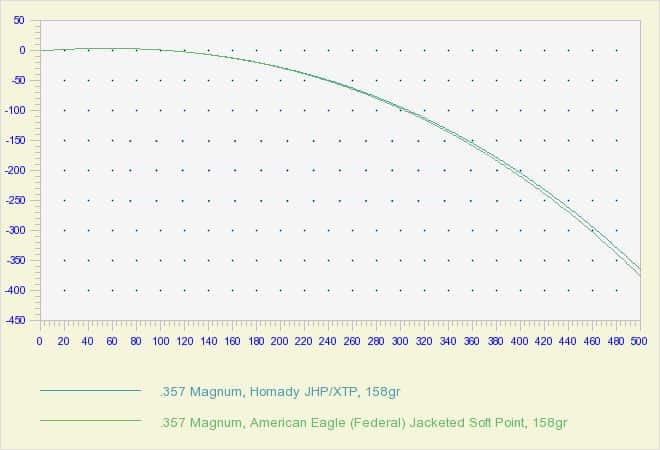
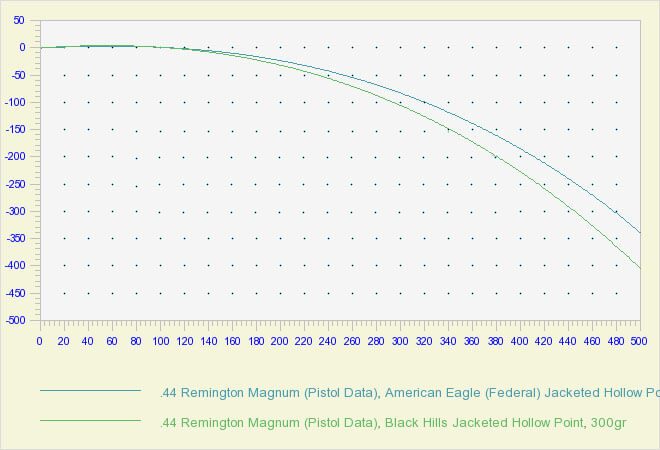
Accuracy
The accuracy of a handgun cartridge is influenced by a number of factors, including the bullet weight, muzzle velocity, barrel length, and the shooter’s skill.
In general, the .357 Magnum is considered to be slightly more accurate than the .44 Magnum. This is due to the fact that the .357 Magnum has a smaller bullet diameter, which results in less wind resistance and a flatter trajectory.
Additionally, the .357 Magnum typically has a higher muzzle velocity than the .44 Magnum, which also contributes to its accuracy.
However, the difference in accuracy between the two cartridges is relatively small. In the hands of a skilled shooter, both cartridges are capable of producing excellent accuracy. Ultimately, the best cartridge for a particular shooter will depend on their individual preferences and shooting style.
As you can see, the .44 Magnum has a heavier bullet and a lower muzzle velocity than the .357 Magnum. This results in a higher muzzle energy for the .44 Magnum. However, the lower muzzle velocity of the .44 Magnum can also lead to a slightly less flat trajectory.
Stopping Power
The .44 Magnum is considered to have more stopping power than the .357 Magnum. This is due to its larger bullet diameter, heavier bullet weight, and higher muzzle energy. The .44 Magnum is capable of creating a larger wound channel and transferring more energy to the target, which can increase the chances of incapacitating an attacker.
However, the .357 Magnum is still a powerful cartridge with significant stopping power. In fact, many experts believe that shot placement is more important than caliber when it comes to stopping an attacker. A well-placed shot from a .357 Magnum is just as likely to stop an attacker as a poorly placed shot from a .44 Magnum.
Hunting Applications
The .44 Magnum is a versatile hunting cartridge that can be used for a wide variety of game, including deer, elk, bear, and even moose.
Its heavy bullets and high muzzle energy provide deep penetration and stopping power. The .44 Magnum is a good choice for hunters who want a powerful cartridge that can handle large game.
The .357 Magnum is a good choice for hunters who are looking for a lighter-recoiling cartridge that is still capable of taking down medium-sized game. The .357 Magnum is a good choice for hunting deer, hogs, and other medium-sized game.
Self-defense Considerations
- The .44 Magnum is generally considered to have more stopping power than the .357 Magnum. This is due to its heavier bullet and higher muzzle energy. However, the .357 Magnum is still a very effective self-defense cartridge, and its lighter recoil may make it easier for some shooters to control.
- The .44 Magnum has a higher potential for overpenetration than the .357 Magnum. This means that there is a greater risk of a bullet passing through a target and hitting something or someone behind it.
- The .44 Magnum typically has a higher muzzle flash than the .357 Magnum. This can be disorienting in low-light conditions.
- The .44 Magnum is typically more expensive to shoot than the .357 Magnum.
Cost & Availability
Cost
.44 Magnum ammunition is typically more expensive than .357 Magnum ammunition. This is because .44 Magnum cartridges are larger and require more material to manufacture.
Additionally, .44 Magnum ammunition is not as widely produced as .357 Magnum ammunition, which can also contribute to its higher cost.
For example, a box of 50 rounds of .44 Magnum ammunition can cost around $50, while a box of 50 rounds of .357 Magnum ammunition can cost around $30.
Availability
.44 Magnum ammunition is not as widely available as .357 Magnum ammunition. This is because .44 Magnum is not as popular a caliber as .357 Magnum. As a result, .44 Magnum ammunition may be more difficult to find in some stores.
However, .44 Magnum ammunition is still readily available from online retailers. Additionally, many gun stores will be able to special order .44 Magnum ammunition if it is not in stock.
Conclusion
In summary, the choice between the .44 Magnum and .357 Magnum should align with your specific requirements, preferences, and your ability to handle recoil. The .44 Magnum excels in hunting larger game and offers remarkable stopping power, but its recoil can be challenging.
The .357 Magnum, with its lower recoil, is an excellent choice for self-defense and general shooting, making it more accessible for a broader range of shooters.
Consider your intended use and prioritize factors such as recoil management and ammunition availability when making your decision.
Last Updated on November 21, 2023 by
